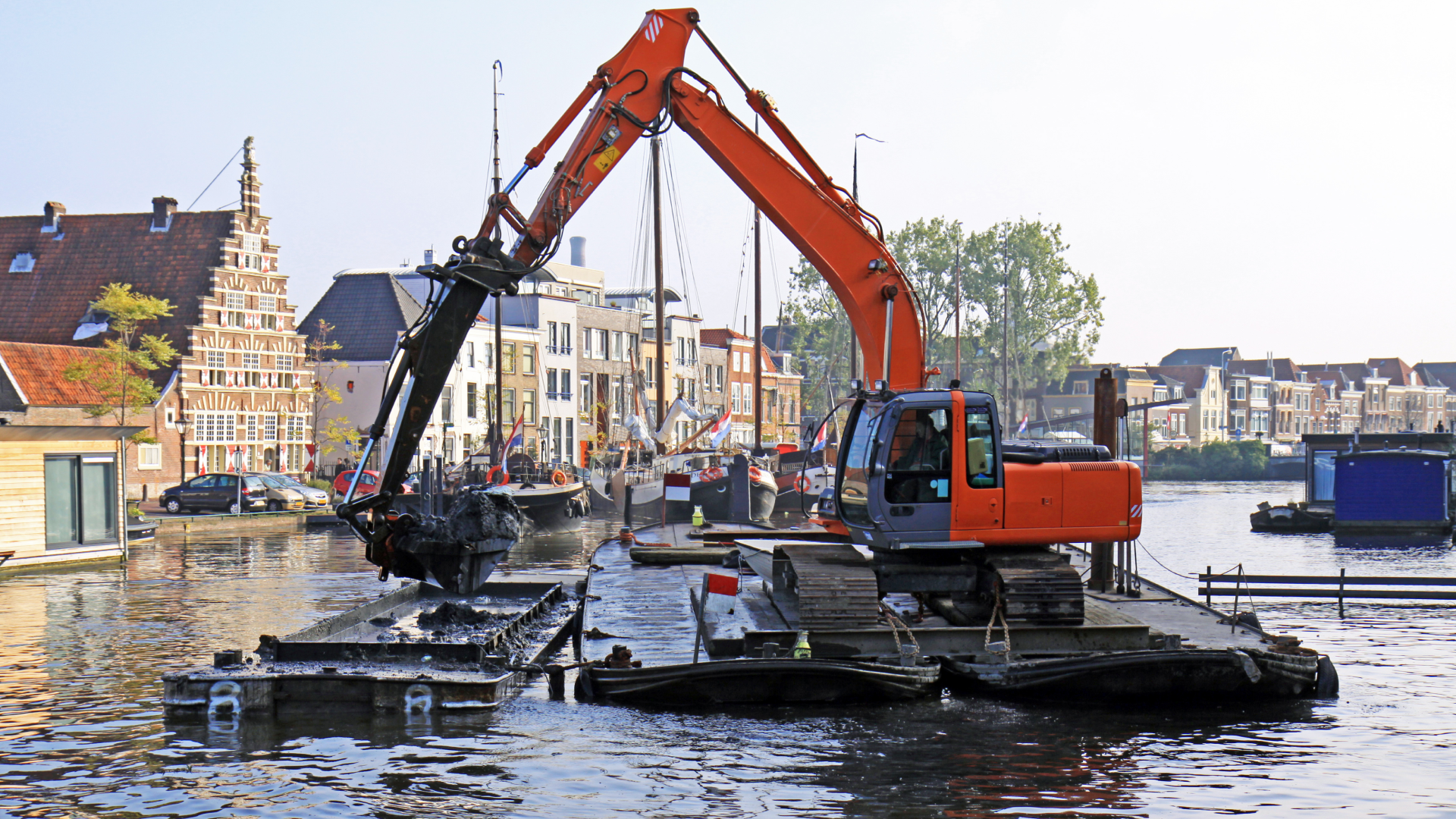1. Introduction
1.1. What is Dredging?
Dredging is removing sediment, debris, and other materials from the bottom of water bodies such as rivers, lakes, and harbors. This process is essential for maintaining or increasing the depth of these waterways, ensuring they remain navigable for ships and boats. The dredging work principle involves using specialized equipment to excavate and transport the accumulated materials to designated disposal sites or for beneficial reuse. While dredging has been practiced for centuries, the methods and equipment have significantly evolved, incorporating various dredging types to make the process more efficient and environmentally sustainable. The origins of dredging trace back to ancient times when simple tools were used to clear channels for trade. Over time, technological advancements have refined the dredging work principle, transforming it into a critical operation across various industries.
1.2. Why Dredging is Important
Dredging is vital in multiple sectors, including shipping, navigation, environmental restoration, and coastal protection. The core dredging work principle is crucial for maintaining navigable waterways, which are the lifelines of global trade. Without regular dredging, silt and sediment would accumulate, blocking channels and harbors and hindering the movement of goods. Furthermore, understanding the various dredging types is essential for environmental remediation, as each type can effectively remove contaminated sediments, thereby restoring aquatic ecosystems. The economic impact of dredging is substantial, supporting trade, tourism, and infrastructure development. Environmentally, dredging can enhance water quality and protect coastal regions from erosion, but it must be conducted responsibly to minimize adverse effects. This is where a deep understanding of the dredging work principle and the appropriate dredging techniques becomes invaluable.
2. Understanding the Basics of Dredging
2.1. The Purpose of Dredging
Dredging primarily aims to maintain or deepen waterways to ensure the safe passage of ships and boats. Navigational dredging is essential for ports and harbors, where sedimentation can pose significant challenges. On the other hand, environmental dredging focuses on habitat restoration and pollution control. By removing toxic sediments, this type of dredging can help revitalize aquatic environments and promote biodiversity. Additionally, dredging is used for infrastructure development and land reclamation, particularly in urban areas with limited space. This involves creating new land by depositing dredged material in designated areas, which can then be developed for various purposes. Each purpose leverages different dredging techniques and types, chosen based on the specific requirements of the project and the dredging work principle.
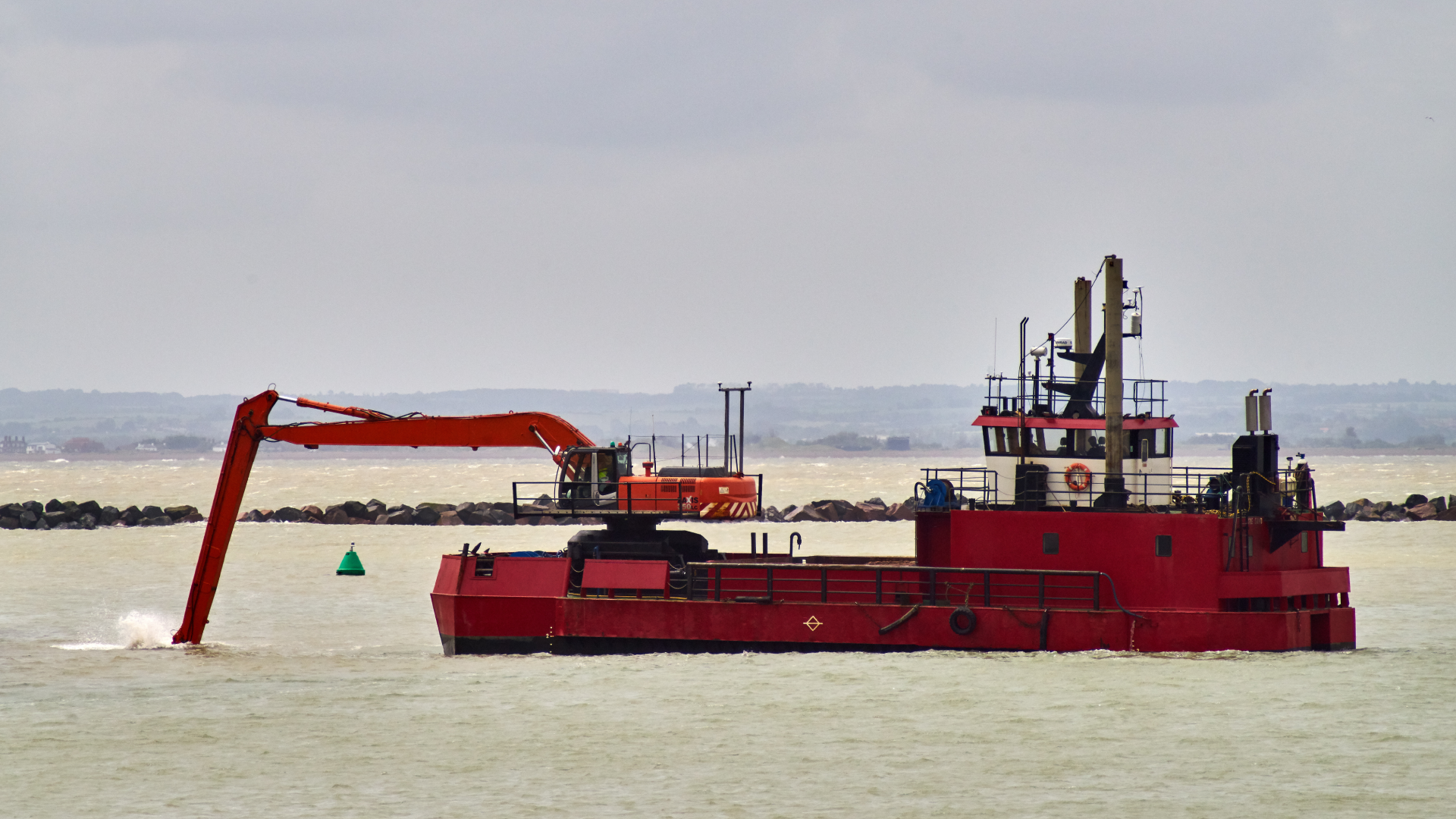
2.2. Types of Dredging Techniques
Dredging techniques can be classified into mechanical, hydraulic, and environmental methods. Mechanical dredging involves using heavy machinery like backhoe dredgers and grab dredgers, which physically scoop up material from the waterbed. Hydraulic dredging uses suction to draw up sediment transported through pipelines to disposal or reclamation sites. Cutter and trailing suction hopper dredgers are common examples of hydraulic dredging equipment. Environmental dredging techniques are designed to minimize the disturbance of contaminated sediments, using specialized tools that carefully remove pollutants without spreading them. Each of these dredging types is selected based on the specific needs of the dredging project and the underlying dredging work principle, ensuring that the process is efficient and environmentally sound.
3. The Dredging Process Explained
3.1. Pre-Dredging Preparations
Before dredging begins, thorough site surveys and environmental impact assessments are conducted. These assessments help determine the best approach, ensuring the dredging operations are effective while minimizing environmental harm. Engineers also select the appropriate dredging types, methods, and equipment based on the sediment type, depth, and project goals. Understanding the dredging work principle is crucial during this phase, as it ensures that the chosen method aligns with the project’s objectives and environmental considerations.
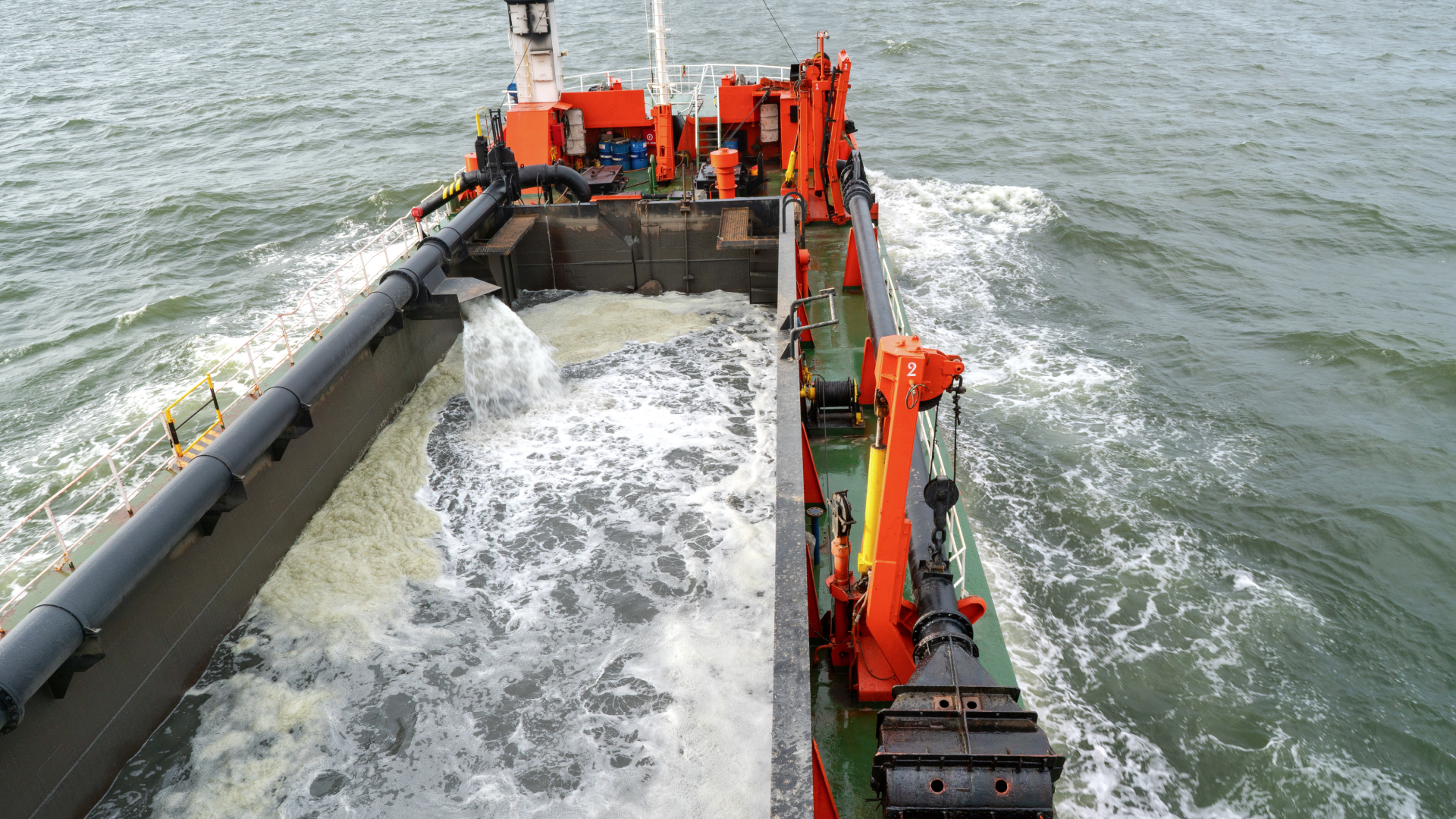
3.2. Execution of Dredging Operations
Once preparations are complete, the dredging equipment is deployed and operated according to the project plan. The dredging work principle involves removing sediment from the waterbed and managing the dredged material. This material can be disposed of in designated areas, relocated for beach nourishment, or reused in land reclamation projects. The execution phase requires skilled operators and constant monitoring to ensure the dredging process is carried out safely and efficiently. Depending on the specific project requirements, different dredging types may be utilized during this phase. Any deviations from the plan are addressed promptly to avoid potential issues.
3.3. Post-Dredging Activities
After dredging, post-dredging activities focus on site restoration and long-term environmental management. This may involve replanting vegetation, stabilizing the shoreline, and monitoring water quality to ensure the area recovers fully. Regular maintenance dredging may be required in certain areas to prevent sediment build-up and maintain navigable depths. Post-dredging monitoring is essential for assessing the project’s success and identifying any ongoing environmental concerns that need to be addressed. This final step in the dredging process underscores the importance of applying the correct techniques to ensure sustainable outcomes.
4. Key Applications of Dredging
4.1. Maintaining and Deepening Navigation Channels
One of the most critical applications of dredging is maintaining and deepening navigation channels. This ensures that ports and harbors remain accessible to large vessels essential for global trade. For example, major port dredging projects worldwide have enabled the safe passage of increasingly larger ships, supporting economic growth and international commerce. Without regular dredging, these channels would become shallow and potentially dangerous, leading to costly delays and disruptions in the supply chain. Each project must thoroughly understand the dredging work principle and the appropriate types to ensure success.
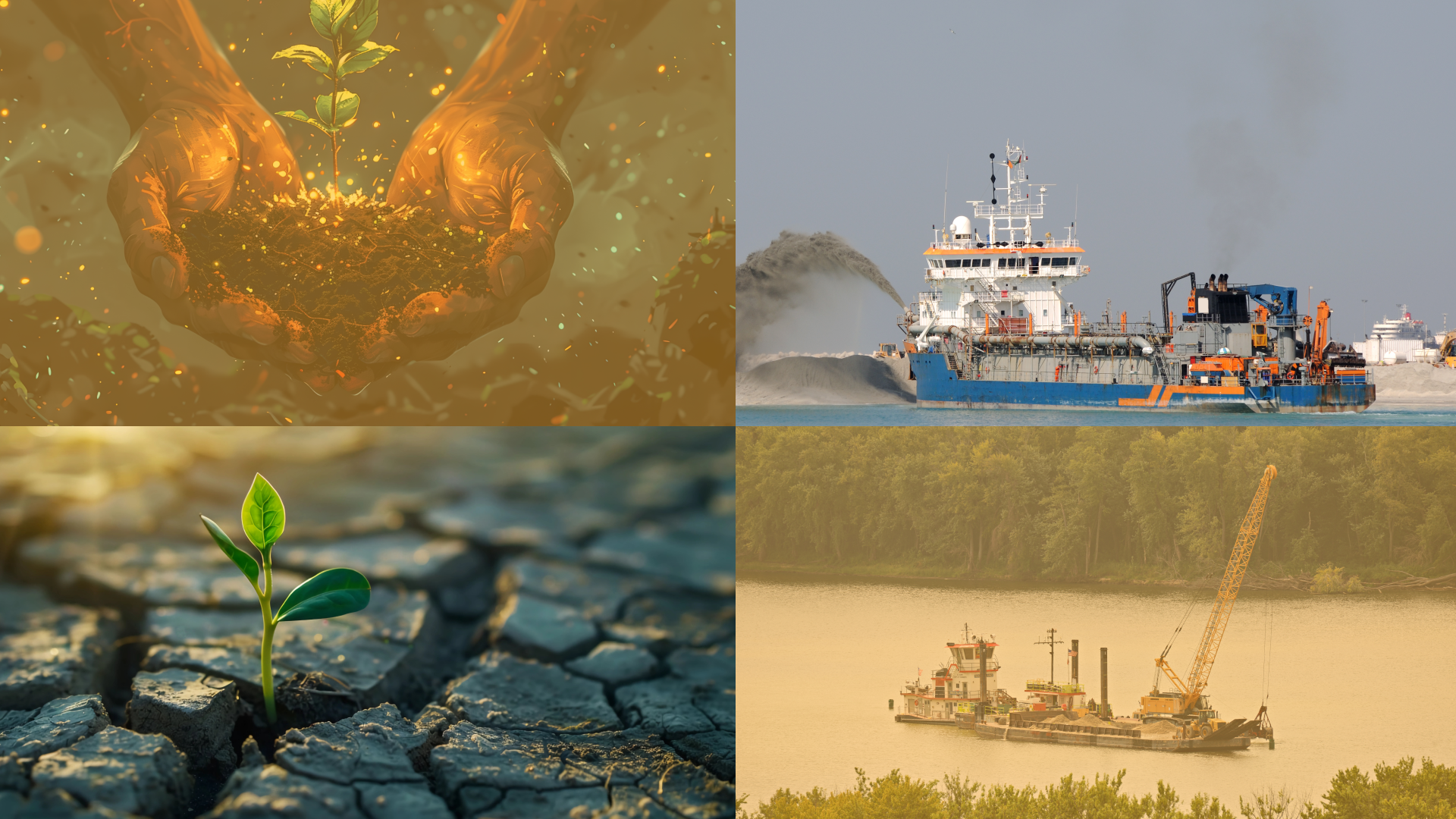
4.2. Environmental Remediation
Dredging also plays a vital role in environmental remediation by removing contaminated sediments from water bodies. This process is crucial for restoring aquatic ecosystems, improving water quality, and protecting public health. For instance, dredging has been used to clean up rivers and lakes polluted by industrial waste, helping to revive aquatic life and make the water safe for human use. These projects often employ environmental dredging techniques tailored to the specific contaminants and site conditions. The choice of dredging types is critical here, ensuring that the dredging work principle effectively addresses environmental challenges without causing further harm.
4.3. Coastal Protection and Land Reclamation
Coastal protection is another significant application of dredging. By stabilizing shorelines and preventing erosion, dredging helps protect coastal communities from the impacts of storms and rising sea levels. Land reclamation projects, which involve creating new land from dredged material, are also common in densely populated areas where space is at a premium. These projects can provide valuable land for urban development, agriculture, and other uses, contributing to economic growth and sustainability. The dredging work principle guides the selection of appropriate techniques, ensuring that these projects meet environmental and developmental goals.
5. The Environmental and Social Impacts of Dredging
5.1. Environmental Considerations
While dredging offers numerous benefits, it also has potential environmental impacts that must be carefully managed. These include habitat disruption, water pollution, and the spread of contaminants. To mitigate these effects, dredging projects often incorporate eco-friendly practices, such as using silt curtains to contain sediment and employing precision dredging techniques to minimize disturbance. The dredging work principle in environmental projects emphasizes reducing negative impacts while achieving the desired outcomes. Environmental monitoring is also conducted throughout the dredging process to address any adverse effects promptly.

5.2. Social and Economic Impacts
Dredging projects can have significant social and economic impacts on local communities. On the positive side, they can create jobs, improve infrastructure, and support economic development. However, they can also be controversial, particularly when they involve displacement or affect local livelihoods. Engaging with communities and addressing their concerns is crucial for the success of dredging projects. This involves transparent communication, fair compensation, and efforts to minimize disruption to daily life. Applying the appropriate dredging types and adherence to the dredging work principle is essential for balancing these impacts.
6. The Future of Dredging
6.1. Innovations in Dredging Technology
The future of dredging will likely be shaped by technological innovations that improve efficiency and reduce environmental impact. Advances in automation and remote-controlled dredging are already making operations safer and more precise. Sustainable dredging techniques, such as using biodegradable hydraulic fluids and energy-efficient equipment, are also gaining traction. These innovations will meet the growing demand for dredging services while minimizing the ecological footprint. The dredging work principle will continue to evolve as new technologies and methods are developed, ensuring that dredging remains effective and sustainable.
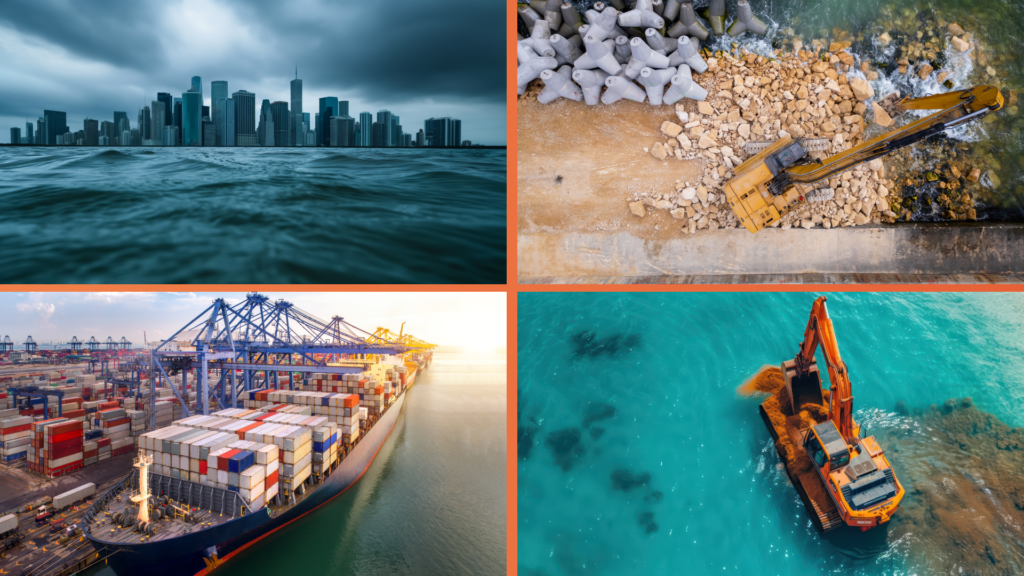
6.2. Global Trends and the Growing Demand for Dredging
As global trade expands and climate change accelerates, the demand for dredging will increase. Dredging will play a crucial role in adapting to rising sea levels, protecting coastal infrastructure, and supporting the growth of ports and harbors. Expanding dredging activities in developing regions will be essential for economic development and disaster resilience. As such, the dredging industry must continue to innovate and adopt sustainable practices to meet these challenges. A deep understanding of the dredging work principle and the various dredging types will be key to addressing these future demands.
7. Conclusion
Dredging is a vital process that supports global trade, environmental restoration, and coastal protection. By removing sediment and debris from water bodies, dredging ensures safe navigation, improves water quality, and creates new land for development. The application of the correct dredging techniques and adherence to the dredging work principle are crucial for achieving these goals. As the world faces growing environmental and economic challenges, the need for responsible and efficient dredging practices will only increase. By embracing innovation and sustainability, the dredging industry can continue to play a crucial role in shaping the future.
